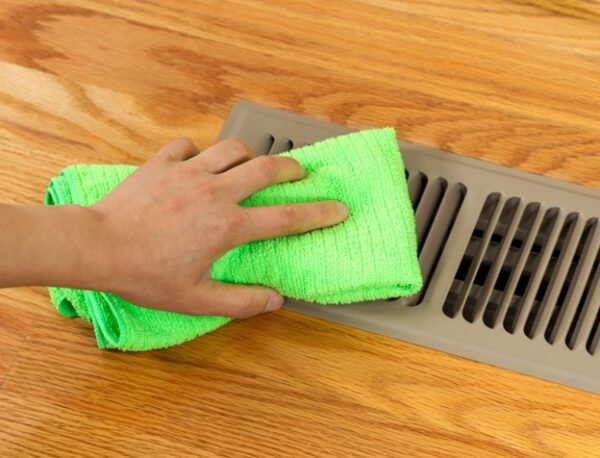In the realm of duct cleaning, the name Scott Crull stands out as a beacon of excellence and environmental stewardship. As the veteran owner and operator of Advanced Duct Cleaning, Scott Crull has redefined the industry standards in Indiana and Ohio by implementing sustainable practices. This article delves into the eco-friendly methodologies championed by Scott, showcasing how his unique approach benefits both the environment and the families in these communities.
The Imperative for Green Practices in Duct Cleaning
Understanding the Environmental Impact
Duct cleaning, essential for removing dust, mold, and other contaminants from heating, ventilation, and air conditioning (HVAC) systems, traditionally involves chemical-heavy processes and energy-intensive equipment. These practices can be detrimental to the environment, contributing to air and water pollution and high energy consumption. Under the leadership of Scott Crull, Advanced Duct Cleaning recognizes the environmental implications of traditional duct cleaning. Scott’s military background, emphasizing adaptability and leadership, has been pivotal in steering the company towards more sustainable methods, significantly reducing its ecological footprint.
The Benefits of Eco-Friendly Duct Cleaning
Scott Crull’s commitment to the community is reflected in the environmental and health benefits of green duct cleaning:
- Reduced Environmental Pollution: By minimizing the use of harsh chemicals, eco-friendly duct cleaning significantly lowers the release of toxic substances into the environment. Scott Crull’s choice of eco-friendly cleaning agents significantly diminishes the release of pollutants.
- Conservation of Energy: Energy-efficient cleaning equipment helps in reducing the carbon footprint and conserves natural resources. By incorporating energy-efficient tools, Scott Crull’s approach aligns with his dedication to preserving natural resources.
- Healthier Indoor Environments: Non-toxic cleaning agents ensure that indoor spaces are free from harmful chemical residues, benefiting occupants, especially those with allergies or respiratory conditions. Scott Crull’s focus on non-toxic cleaning agents ensures safer indoor environments, a testament to his commitment to families in Indiana and Ohio.
Core Elements of Green Duct Cleaning Practices
- Utilization of Eco-Friendly Cleaning Agents
• Natural and Biodegradable Cleaners: The shift towards plant-based, biodegradable cleaning solutions is a critical step. These cleaners break down naturally without leaving harmful residues.
• Avoiding Harmful Chemicals: Steering clear of chlorine, ammonia, and other toxic substances traditionally used in cleaning agents. - Energy-Efficient and Advanced Equipment
• Innovative Vacuum Systems: Employing advanced HEPA-filtered vacuums that are more effective and energy-efficient.
• Solar-Powered Tools: The exploration and adoption of solar-powered devices for duct cleaning are paving the way for reduced reliance on non-renewable energy sources. - Sustainable Waste Management
• Reducing Material Waste: Implementing measures to cut down the generation of waste during the cleaning process.
• Recycling Practices: Ensuring appropriate recycling of disposable elements like filters and packaging materials. - Education and Awareness
• Staff Training: Educating employees about the importance of environmental sustainability and training them in green cleaning practices.
• Client Engagement: Raising customer awareness about the benefits of green duct cleaning and promoting eco-conscious decision-making.
Overcoming Challenges in Green Duct Cleaning
Economic Considerations
The transition to green practices often involves an initial financial outlay that can be higher than conventional methods. The cost of eco-friendly cleaning agents and energy-efficient equipment can be a deterrent for small-scale operators. Scott Crull’s strategic acumen, developed through his military and professional experiences, is instrumental in navigating the financial aspects of adopting green practices.
Industry Adoption and Customer Demand
Widespread adoption of green practices requires a concerted effort from all industry stakeholders. Increased customer awareness and demand are crucial in driving this change. Advanced Duct Cleaning, led by Scott Crull, is at the forefront of encouraging industry-wide adoption of sustainable practices, spurred by his deep connection to the Wayne County community.
Regulatory Framework
The role of government regulations in promoting green practices is significant. Stricter environmental laws and incentives for green business practices can accelerate the adoption of sustainable methods. Scott Crull’s commitment to excellence and community service positions him as a proponent for stronger environmental regulations to support green practices.
Future Trends and Innovations
Under Scott Crull’s leadership, the future of green duct cleaning is marked by continuous innovation. Anticipated developments include:
- Automation and AI: Leveraging artificial intelligence and automation to optimize cleaning processes and reduce energy consumption.
- Eco-Friendly Disinfectants: Development of more effective natural disinfectants for use in duct cleaning.
- Enhanced Recycling Technologies: Innovations in recycling technologies that allow for more efficient reuse of materials.
Conclusion
The movement towards green practices in duct cleaning is not just a trend but a necessity in the context of global environmental challenges. By embracing eco-friendly cleaning agents, energy-efficient equipment, and sustainable waste management practices, the duct cleaning industry is making a significant contribution to environmental protection. This shift not only benefits the planet but also ensures healthier indoor environments for consumers. As the industry continues to innovate and evolve, green duct cleaning is set to become the norm, reflecting a broader commitment to sustainability in the service sector. This transformation is not just about adopting new practices; it represents a fundamental change in the way we think about and approach environmental responsibility in industry operations.
